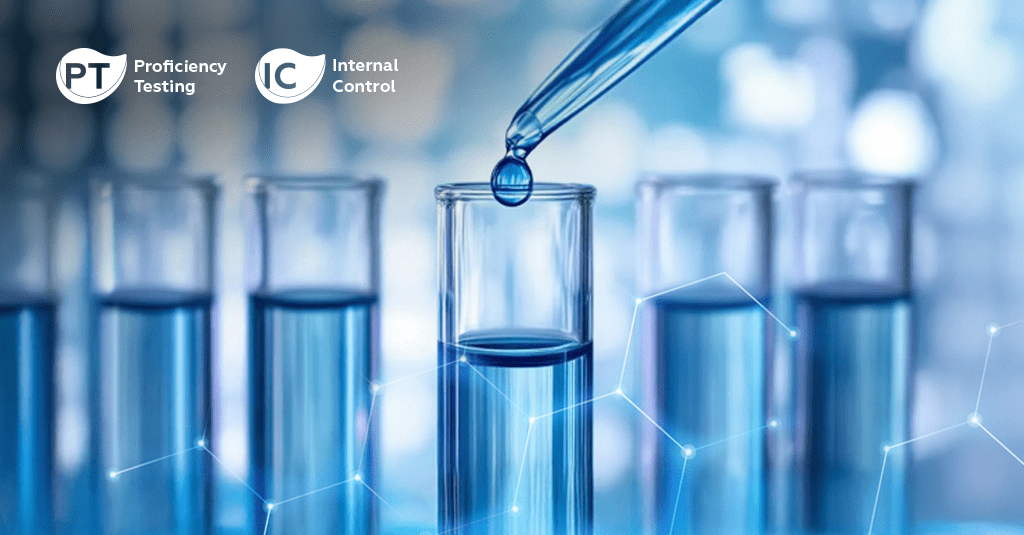Understand why continuous monitoring and periodic evaluation complement each other and are essential for reliable results.
The pursuit of reliable analytical results requires more than just compliance with standards or occasional evaluations. Analytical quality must be assessed periodically and sustained daily—and this is only possible through the integration of two essential tools: Proficiency Testing (PT) and Internal Control (IC).
These tools—also known as External Quality Control (EQC) and Internal Quality Control (IQC), respectively—are pillars in managing analytical quality, directly contributing to ensuring the reliability of test results. This approach is grounded in various international standards and regulations, such as Brazil’s RDC 978/2025, which reinforces the joint application of these practices as a fundamental part of continuous monitoring and evaluation of results.
While PT assesses analytical performance at specific points in time, IC ensures the ongoing quality of results.
Together, these practices build a robust, reliable quality system aligned with regulatory requirements.
Understand the applications of PT and IC
Proficiency Testing
Conducted in scheduled rounds, PT evaluates the performance of analyses based on control samples and pre-established technical criteria. Comparison with other participants and analysis of the results allow detection and correction of analytical deviations, identification of systematic and random errors, as well as demonstrating regulatory and normative compliance.
Internal Control
With daily operation, IC enables continuous monitoring of analytical performance, identifying handling errors and allowing immediate detection of routine variations before they impact released results. It is also essential for verifying reagent degradation, sensitivity, and specificity, as well as demonstrating regulatory and normative compliance.
Why use both?
Participating in Proficiency Testing is essential but alone does not guarantee daily reliability of results.
Since PT is performed periodically, it offers only a snapshot of analytical performance. Meanwhile, IC allows continuous monitoring of test precision on a daily basis.
These tools complement each other: internal control monitors, proficiency testing evaluates.
| Since PT is conducted periodically, it provides only a snapshot of the analytical performance. |

|
| Meanwhile, IC allows continuous daily monitoring of test precision. |

|
| These tools complement each other: internal control monitors, proficiency testing evaluates. |

|
Both programs are offered by Controllab, a reference in laboratory quality control and present in over 40 countries.
Check out the programs’ key differentiators:
| Proficiency Testing | |
 Comprehensive analysis overview Comprehensive analysis overview
|
|
 Exclusive and innovative controls Exclusive and innovative controls
|
|
 Management summary Management summary
|
|
 Periodic evaluation and trend graphs Periodic evaluation and trend graphs
|
| Internal Control | |
 Third-party (independent) controls Third-party (independent) controls
|
|
 Samples valued by interlaboratory comparison Samples valued by interlaboratory comparison
|
|
 Materials with clinically relevant concentrations Materials with clinically relevant concentrations
|
|
 Free access to CI ONLINE – An intelligent environment that enhances your routine Free access to CI ONLINE – An intelligent environment that enhances your routine
|
More than 3,500 assays to strengthen your routine
Controllab offers comprehensive coverage of analytical areas, from essential routines to the most advanced ones, including POCTs (point-of-care tests), enabling the application of quality control practices in services performing Clinical Analysis Exams (CAE) and other assays.
By integrating Proficiency Testing and Internal Control into the routine, the service not only meets regulatory requirements but also promotes analytical excellence.
Access our online catalog and speak with a specialist via WhatsApp: (21) 98258-0074.

